March 2024 Greensheet Market Analysis: Recent Highlights In World Paper Money
A total of 19 lots in the recent Stack's Bowers sale reached $20,000 or more, and there will be more five-figure world banknotes up for grabs this month.
While the U.S. currency market finds itself in a temporary quiet period, in terms of major sales, I thought it would be appropriate to highlight what has been going on in the world paper money market. As I have written in the past, there is more crossover than ever between U.S. and world paper money. More dealers are carrying inventories of both, recognizing the opportunities available. For our part, work on The Banknote Book continues apace with a two-prong approach. The first priority is the completion of unpublished chapters, and to that end we have recently published Ireland, Tibet, the specialized Greek areas of Crete and the Ionian Islands, with more coming soon. The historical background, images, and pricing of newly published chapters is unmatched. Secondly, we aim to review and revise pricing in older chapters. The ideal scenario is to make these pricing updates in consultation with leading experts/collectors of the given country. We have accomplished this in some places already, and are always open and willing to work with those who wish to share their expertise.
As far as market events, Stack’s Bowers Galleries got the 2024 action going with their annual sale that is associated with the New York International show in January. This sale has always been a prime event for incredible material, going back to the Ponterio & Associates days. This year was no different, with the sale anchored by an important collection of Costa Rican banknotes. Despite its relatively small size as a country, the paper money of Costa Rica is avidly collected and prior to this sale there had not been another landmark collection publicly offered since the Frederick Meyer sale back in 2008. The earliest governmental paper money of Costa Rica were the Republic issues starting in 1865, with a second series following in the 1880s. A 25 Pesos note of this second series, dated 1885 and grading Fine, was the most valuable Costa Rican piece selling for $48,000.
The top lot of the sale, however, is a very mysterious piece, and the price equally astounding. Selling for $50,400, it was a 1,000 ruble circulating check issued by the Russo-Asiatic Bank hand-dated 1917. As can be read in The Banknote Book China chapter, this institution was founded in Paris in 1895 as the Russo-Chinese Bank (Banque Russo-Chinoise) by Russian and French interests. It made loans to the Chinese Government and financed projects, the chief of which was the Chinese Eastern Railway. By 1906 the bank had grown significantly (even having a branch in San Francisco) but by 1910 was forced to merge with another bank and was renamed the Russo-Asiatic Bank. The bank issued many series of banknotes starting in 1898 and going all the way until 1919. The various emissions have it all for the collector: they are rare, historic, colorful, and were issued in a range of exotic denominations, including taels, Mexican dollars (8 reales), and rubles, and were issued from branches in most major trading cities in China at the time. Back to the mystery note: the final banknote series of this bank was an emergency issue that entered circulation in Harbin in 1919 due to a severe lack of banknotes to transact commerce. My theory on the piece sold by Stack’s Bowers is that, since the last previous paper money issue for Harbin was in 1910, the bank branch there resorted to using old stocks of checks (drafts), filled them out by hand, and issued them for circulation because there was no other banknotes to use in 1917. This note was most likely for interbank or business transactions, due to the large denominations. Evidence of this is that the printed name of the bank from the plate is the old name (Banque Russo-Chinoise) but is crossed out by hand in pen and the newer name is written in Russian Cyrillic text. The city of issue Harbin is also handwritten in Cyrillic in the bottom right. The companion piece in the denomination of 500 rubles sold for $48,000, so clearly more than one bidder thought these notes to be extremely important. Another tidbit: the 500 ruble note is pictured in Volume 48, Issue 1 (2009) of the IBNS Journal.
This is the allure of world paper money; there are many pieces still to be uncovered, researched, explained, and collected. I have been reviewing and reading world paper money catalogs for 25 years and I still see notes I’ve never seen before; it is always a thrill.
A total of 19 lots in the Stack's Bowers sale reached $20,000 or more, and there will be more five-figure world banknotes up for grabs this month, as Heritage offers both a World Paper Money Signature sale and a separate Showcase auction of Venezuelan currency. The Signature sale contains more than 550 lots of excellent pieces.

Download the Greysheet app for access to pricing, news, events and your subscriptions.
Subscribe Now.
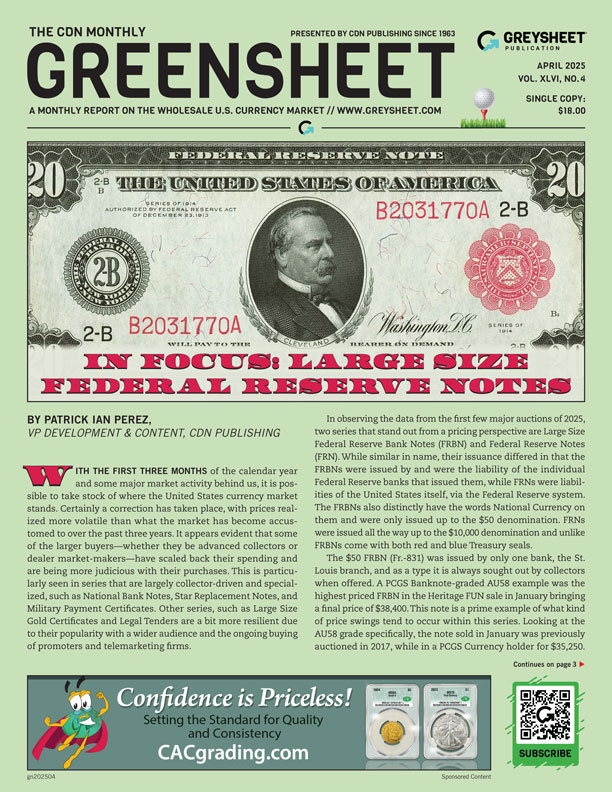
Subscribe to The Greensheet for the industry's most respected pricing and to read more articles just like this.
Author: Patrick Ian Perez
Related Stories (powered by Greysheet News)
View all news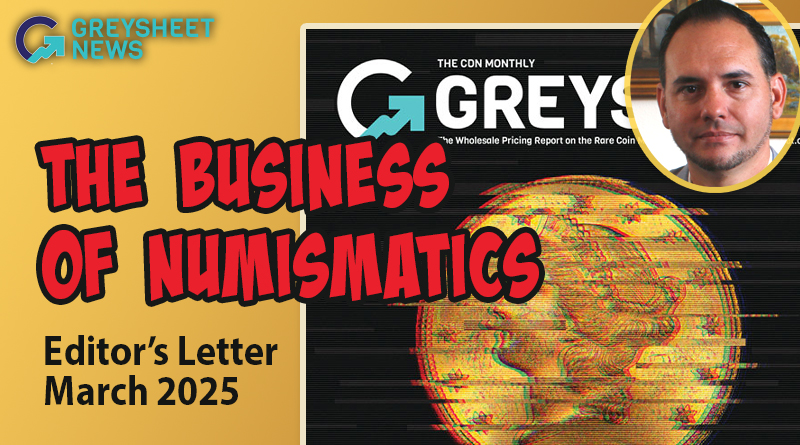
Gold and especially silver has continued to climb, with silver well above the $32 line as I write this column.
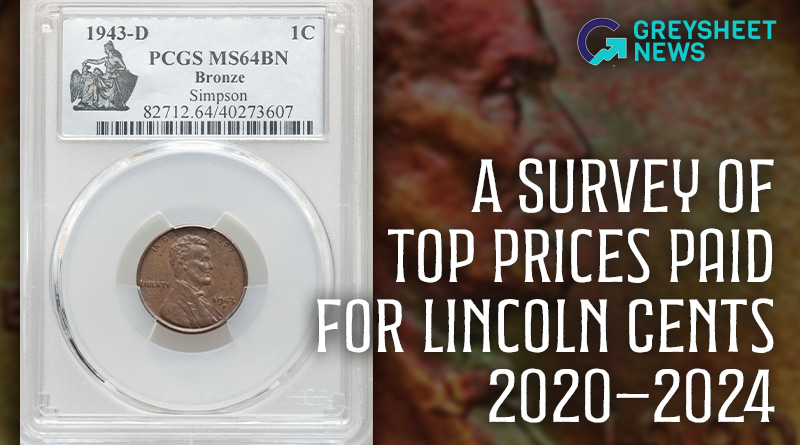
The beauty of the Lincoln Cent's 115-year (and counting) run is that it can be collected by every single level of coin collector.
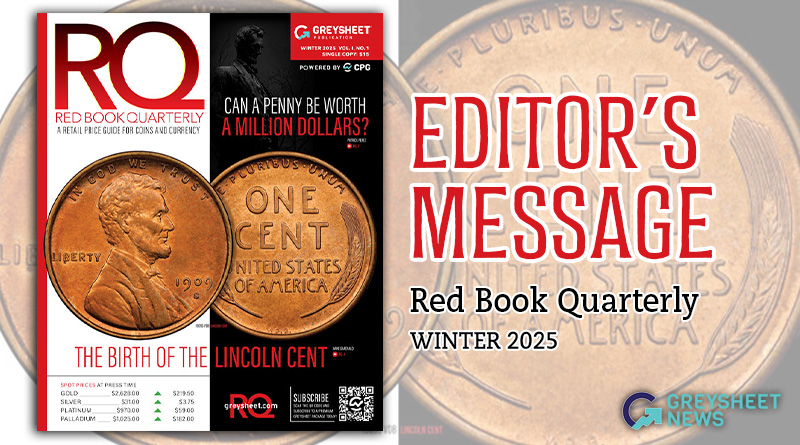
Welcome to the very first issue of the Red Book Quarterly™!


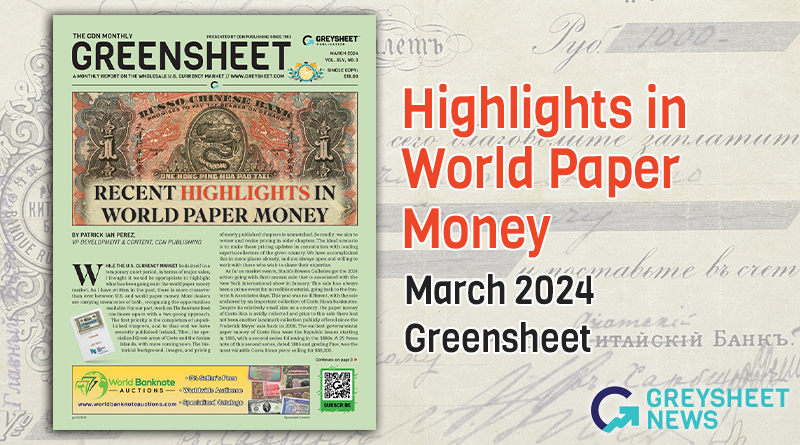






Please sign in or register to leave a comment.
Your identity will be restricted to first name/last initial, or a user ID you create.
Comment
Comments